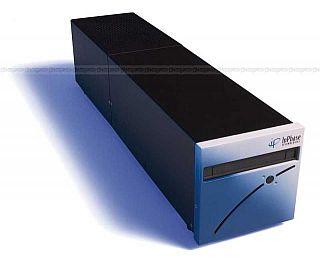Succeeded in saving the entire Esperanto version of 'The Wizard of Oz' in DNA storage

In a storage experiment in DNA storage by Associate Professor Ilya Finkelstein in charge of molecular biology science at the University of Texas Austin, we succeeded in saving the entire `` Wizard of Oz'' translated into
What is DNA Storage? | 'The Wizard of Oz' Stored In DNA
https://www.popularmechanics.com/science/a33327626/scientists-encoded-wizard-of-oz-in-dna/

Attempts to treat DNA as data storage have been made before Associate Professor Finkelstein, and an early experiment by Harvard University in 1988 is known. In this experiment, the DNA sequence of the E. coli
When it comes to storage, HDD, SSD, flash memory, etc. are often used, but in the case of HDD, a rotating disk similar to a CD is stored inside, and data is stored on the surface. In the case of DNA storage, synthetic DNA with specific properties is chemically created based on the four nucleotide bases that form a helix: adenine, cytosine, guanine, and thymine. For HDD, binary code, that is, the data translated into binary number of '0' and '1' is used, but since DNA has four components, storage is more dense.
In 2013, engineers from the European Institute of Bioinformatics, Nick Goldman, created five files including Martin Luther King Jr.'s famous poem ' I Have a Dream ' and Shakespeare's fourteen poems. Successfully encoded into the DNA chain.
Also, in November 2016, the company 'Catalog', which was spun out from the Massachusetts Institute of Technology, succeeded in permanent preservation in the DNA chain of Robert Frost 's poem 'The Road Not Taken'. The amount of data was about 1KB.
A startup company that ``stores data such as text and voice in DNA in an inexpensive way'' is born-GIGAZINE

by
In the same year 2016, about 200 MB of Tolstoy's 'war and peace' digitized by the joint research team of Microsoft and the University of Washington was stored in DNA.
Microsoft plans to use DNA storage for cloud services-GIGAZINE

by Thomas Wensing
According to John Hawkins, who was involved in this research, ``If we store the data with one technology of one teaspoon of DNA with the current technology, we will have enough capacity for 10 large-scale data centers in Walmart. You can save it.'
The advantage of DNA storage is not only 'capacity' but also 'storability'. Those who created a lot of CD-Rs at that time should have realized that CDs, which were used as the mainstream of data storage in the 1990s, especially CD-Rs have uneven storage properties. On the other hand, the data stored in DNA can last for hundreds of thousands of years. In fact, archeology sometimes uses DNA to understand what once happened.
Hawkins says that the ability to read and write DNA is also obsolete.
On the other hand, DNA storage also has its drawbacks. The biggest point is 'cost', and it is said that the DNA storage technology as of 2020 is like Hard Disk 20 that Apple put out in the 1980s in terms of HDD. The Hard Disk 20 has a capacity of 20MB and costs $1495, though it's a little difficult to understand. When converted to the rate as of 2020, it is over 350,000 yen, and the unit price per byte is unusually high.
The second drawback is that it is error prone. On average, DNA has one error (mutation) for 100 to 1000 nucleotide bases. When a substitution mutation occurs that replaces another nucleotide base, the length of the DNA strand is the same, but the base itself changes. Also, extra base may be added or the base may be scraped. This can lead to problems decoding the data stored in the DNA. Hawkins takes the word 'world' as an example, when 'l' is omitted and becomes 'word', and 's' is added to become 'sword', it is very difficult to know that it was originally a world I said.
In the past, DNA storage has overcome the error by repeating the code 10 to 15 times, but this is waste of space, so Associate Professor Finkelstein et al. It is said that each bit was built and each bit augmented the next bit. He also said that he developed an error overcoming algorithm to improve storage efficiency.
However, although the experimental results were epoch-making, Associate Professor Finkelstein predicts that 'it will take more than 10 years to be commercialized.'
Related Posts:
in Science, Posted by logc_nt





